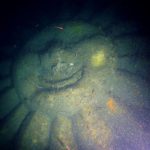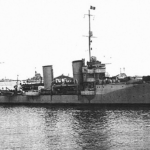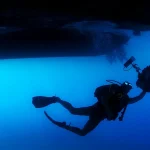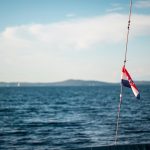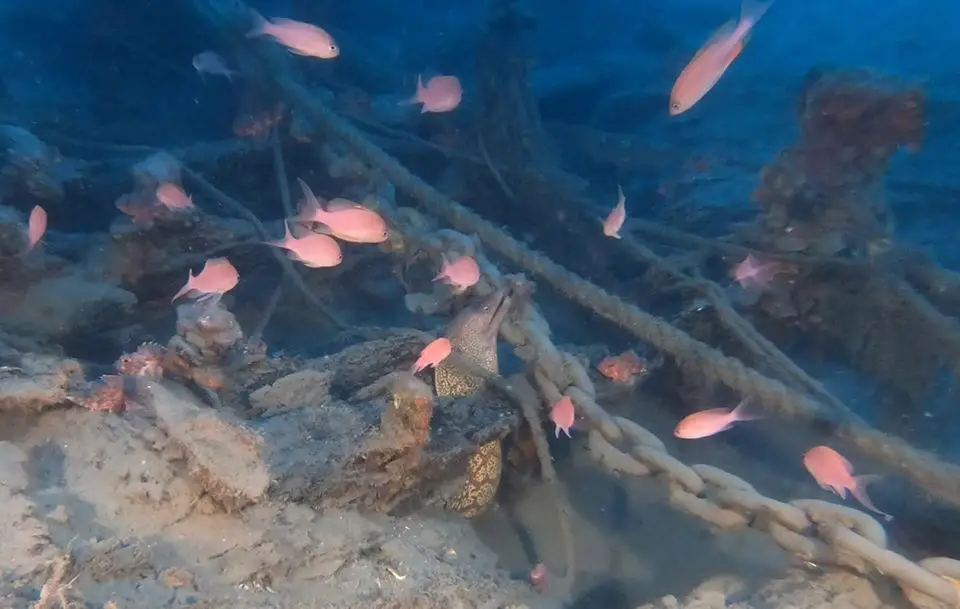
June 27, 2020 – International media report on an exceptional find off the Italian coast, and one which should interest the readers in Croatia as well, as it is probably what’s left of the old Dubrovnik ship Santo Spirito – Santa Maria di Loreto, which sank in 1579.
The remarkable find was first reported back in February when two commercial divers reported that they had found a wooden shipwreck while diving near Camogli, a fishing/tourist village located near Genoa. Edoardo Sbaraini and Gabriele Succi, the divers, encountered a set of wooden timbers at a depth of about 150 feet in the vicinity of Punta Chiappa, south of Camogli, and the local administration posted about the find on their Facebook page, reporting their discovery.
The remarkable accidental discovery garnered a lot of attention because it is well-known that the sea mirror of Punta Chiappa was the location of a 1579 shipwreck of the Santo Spirito – Santa Maria di Loreto, an amazing ship about which so much is still known – and now, it seems, its final resting place is known as well.
In the late afternoon of October 29, 1579, an imposing merchant ship that tried to find shelter from a furious storm, smashed against the cliff in front of the Church of San Nicolò between Camogli and Punta Chiappa, about ten nautical miles east of Genoa. Santo Spirito – Santa Maria di Loreto was probably the largest ship that sailed the western Mediterranean in those times (a website dedicated to naval archaeology states that it could carry 1800 tonnes of weight). The ship’s port was then Ragusa (modern day Dubrovnik) in the Ragusa Republic, a maritime republic which was (mostly) independent and carried the name from 1358 until 1808.
In late 16th century, the Republic was at its peak, with a large merchant navy and many clients. One of their biggest ships (and probably one of the biggest in the Mediterranean as well) was Santo Spirito, then captained by Antonio Iveglia Ohmuchievich, a member of a very rich and influential Ragusa family, who probably owned the boat as well (at least partially). Ivelja is still a common Dalmatian last name. Antonio probably took command of the ship from his brother Giorgio, who had likely tragically died that same year, 1579, in a naval battle which damaged the ship significantly.
Santo Spirito left for its final voyage from Genoa in October 1579, and if you paid attention during your high-school history classes, you might be able to recall that the plague was raging in Genoa at the time, so the city was under strict quarantine. It carried a lot of cannons and munition but got caught in the storm which slammed it against the cliffs. The brave peasants of the village near the site braved both the storm and the potential risk of contracting the plague to save the sailors, and luckily there weren’t any fatalities. It took the ship a few days to completely sink, and right away the operation to salvage as much of the cargo as possible was started, and they managed to save some of the bronze cannons and other munition.
And after that, the precise location of the wreck was somehow – lost. Many naval archaeologists tried locating it in the second half of the twentieth century, many expeditions went to the region and it’s a miracle that nobody was able to find it until now, especially since there was a lot of precise data on where the ship sank. It took two commercial divers in 2020 (one might even go so far as to say something poetic about 2020 being a year of quarantine as well), doing something completely unrelated, to find the Dubrovnik ship many have been looking for, and a major part of Croatia’s very rich naval tradition.

